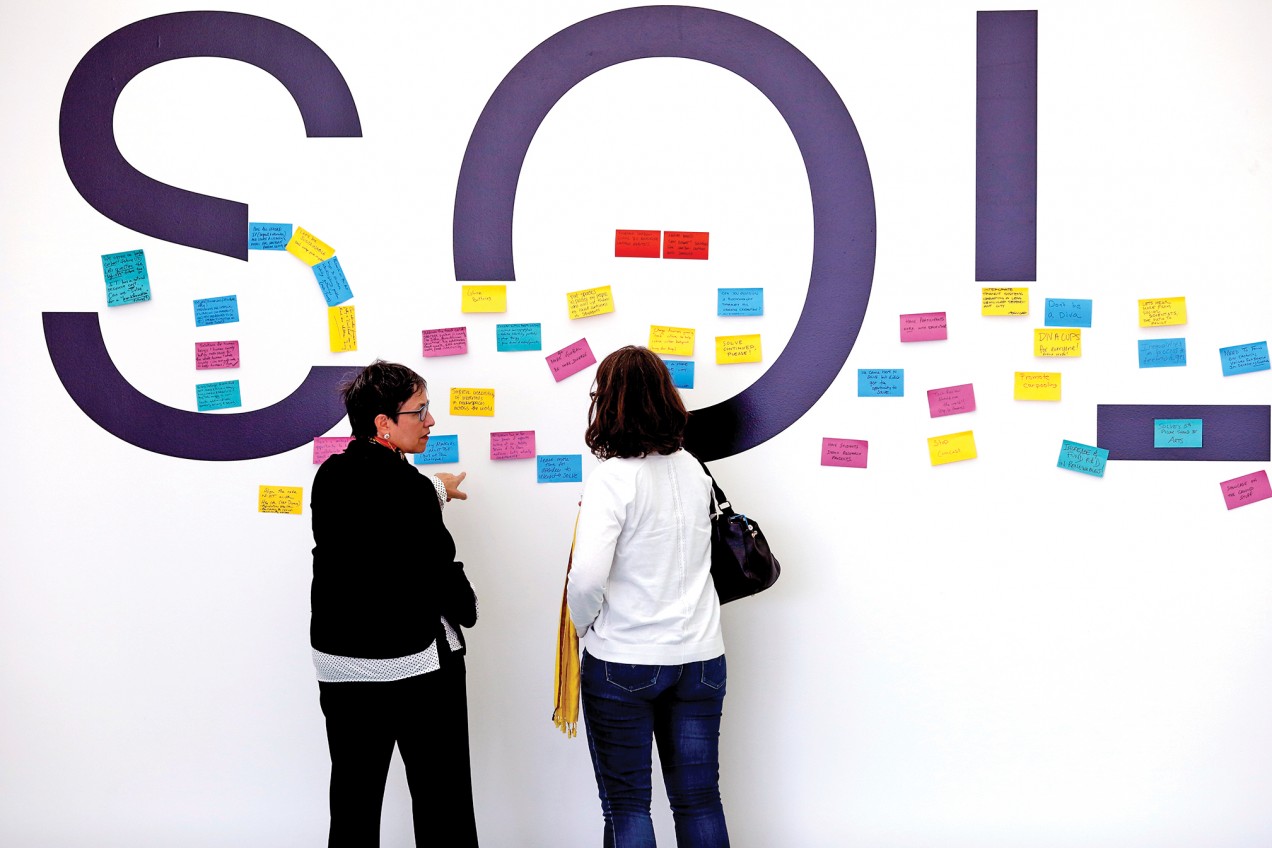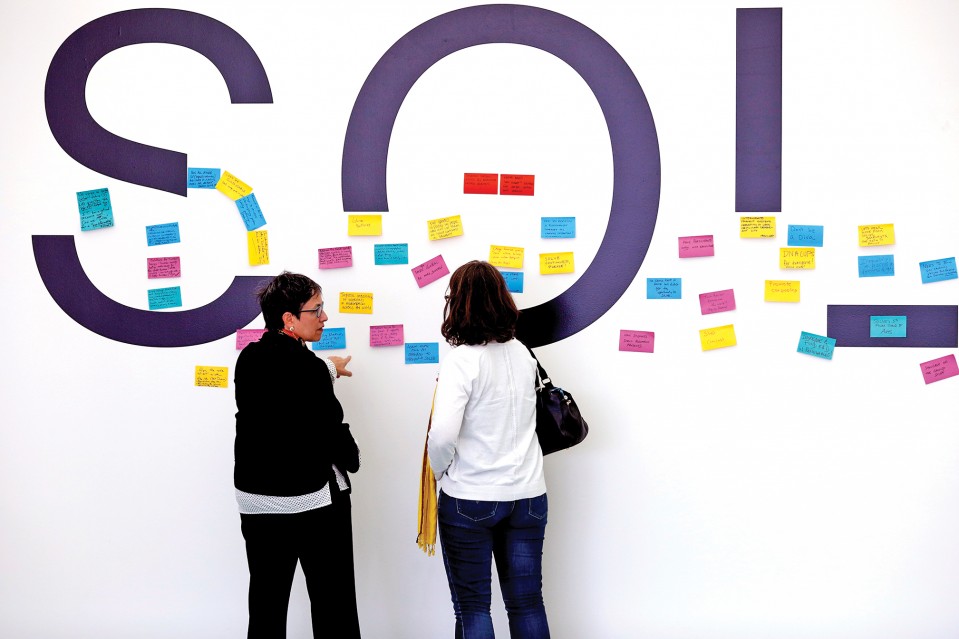

A Community of Solvers
MIT’s inaugural Solve conference tackles major global problems.

This past fall, for the first time, MIT brought together on campus more than 300 influential doers and thinkers from around the world for an event called Solve. Led by senior MIT faculty, they engaged in four days of active problem-solving focused on profound global challenges in four areas—Learn, Cure, Fuel, and Make.
Solve was a fascinating gathering. But we see it as only the beginning of something much larger—a global gathering of forces, a new effort to make a significant difference on serious problems by using MIT’s power to convene.
Joining forces to achieve new impact
We created Solve because at MIT, we want to do good for the world. It is part of our mission and central to our culture of real-world problem-solving. When I arrived as a new faculty member, that pervasive commitment to serving humanity was a big part of what made me feel so attracted to, attached to, and identified with MIT—and I know that it still draws people to the Institute today.
Yet we know very well that MIT is not the only place with such a talented community of problem solvers who want to do good. Even the most brilliant technologists and scientists cannot make progress against the most serious global challenges alone. Many of the really big problems on our planet are global, and most of them require a combination of solutions that are local; as a result, collaboration is indispensable.
For MIT, the conclusion was obvious: We must keep pushing forward in our own research, education, and innovation. But we must also reach out in new ways, connecting with new partners who share our passion and drive to do good for the world. We want to bring together influential people, often outside our usual academic circles; focus with them on the most effective ways to bring science, technology, and policy to bear on the world’s great challenges; learn from their perspectives; tap their expertise and their networks; and work together over time to make serious progress. In effect, the best way to increase the effectiveness of our own community is to connect with and cultivate a global “community of solvers”—and Solve is one mechanism for getting this done. The Solve community will gather again this year in Cambridge to share progress and make further connections, and then go back out into the world to pursue the next steps in their collaboration.
Convening on climate change
As an example, we are already working to play a convening role on one of Solve’s central questions: the challenge of climate change.
As described in MIT’s climate action plan, released this fall, combating climate change will require intense collaboration. Key global players in three sectors—academia, industry, and government—will need to work together through three overlapping stages of progress. The first step is to imagine the future as informed by research: What is the optimal mix of energy sources in 15, 25, and 35 years in order to meet emissions targets and eventually achieve a zero-carbon global energy system? And how can societies across the globe best adapt to the damage done by climate change in the meantime? Next, it will be vital to establish the policy and economic incentives it will take to reach that future. Finally, it will take clear technological goals and aligned incentives to guide, focus, and accelerate the R&D required for success. All three phases need to be continuously refreshed: research and development should inform time lines and targets.
The success of this strategy depends on the best efforts of all three sectors—and on their active collaboration. Building on MIT’s distinctive history of connecting with government and industry, we are eager to join forces with others who are working on this problem from their own positions of strength. We want MIT to make a significant contribution to designing and jump-starting the crucial convening work, and we have already begun.
(If you have ideas for how the MIT alumni community can help our climate action plan succeed, I urge you to take part in our contest, run by MIT’s Climate CoLab, with MIT alumni judges.)
Solving big problems, dissolving divisions
On climate change and all the global challenges tackled at Solve, I am eager to explore how much MIT can achieve with bold efforts to bring key players to the table. If we do it right, we may re-create a wonderful dynamic I have often observed here.
MIT is a mosaic, a fantastic intermingling of people, disciplines, ideas, and cultures. MIT people have also been known to have strong points of view. That variety, combined with that intensity, could be a recipe for conflict.
But as we see over and over, when we get very different people focused on solving very hard, meaningful problems, whatever differences may exist at the beginning disappear—and together these teams can achieve things they once thought impossible. In that spirit, let’s get started!
Advertisement